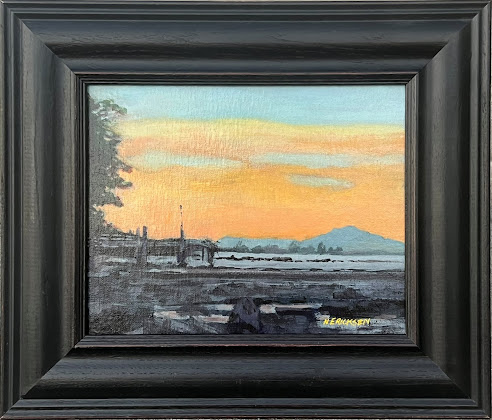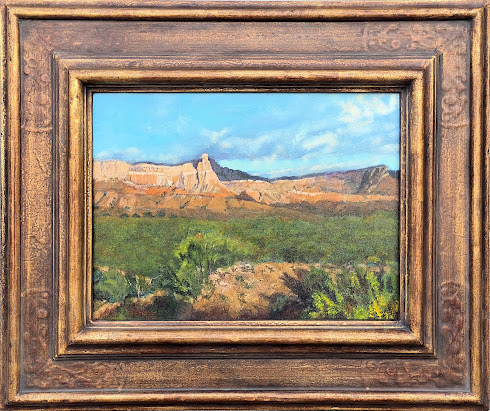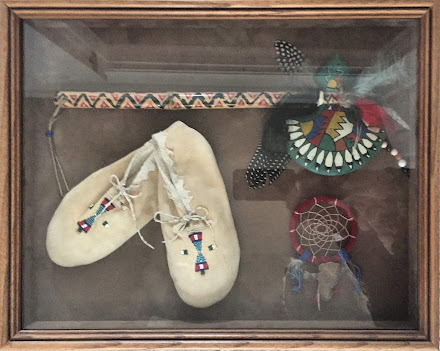19" x 31.125", Acrylic on metal, © 2023
Private Collection
Sometimes you accept to do something that is unfamiliar—not painting, but the subject matter. When photographs are hard to come by except from memories, you buy models (truck [1948 Ford 100] and a Checker) and use a poor quality Google Map, street view—I envision a driver going as fast as possible in a small town in Idaho—it's a tad blurred as a result. The people are even a problem for they lived in a time when photographs were very expensive not to take but to develop. So, you find some and make comps for reference.
You start thinking that you can get it finished in a month and then 18+ months later you finish it. It's not that you don't work on it as it is center-stage in the studio; but you ponder the composition, the colors, and textures. Did I say the photograph was of poor quality. You use your memory of a by-gone era when there weren't garage doors in place and the siding was asphalt brick. What is enough detail, and what is too much? It weighs on you and you paint it several times with varying degrees of success.
Life happens at the same time, so you edit a book or two, paint only one other painting as you feel guilty if you don't work on THE painting, but it is always in your mind—even in Paris. You don't want to be like Leonardo and not finish commissions after you have worked out all the problems.
So, it's finished, and you say good-bye to the Grace House with Mom and Pop out to see you off as you have so many times before. Now it is not just a memory, but an object on the wall.





















